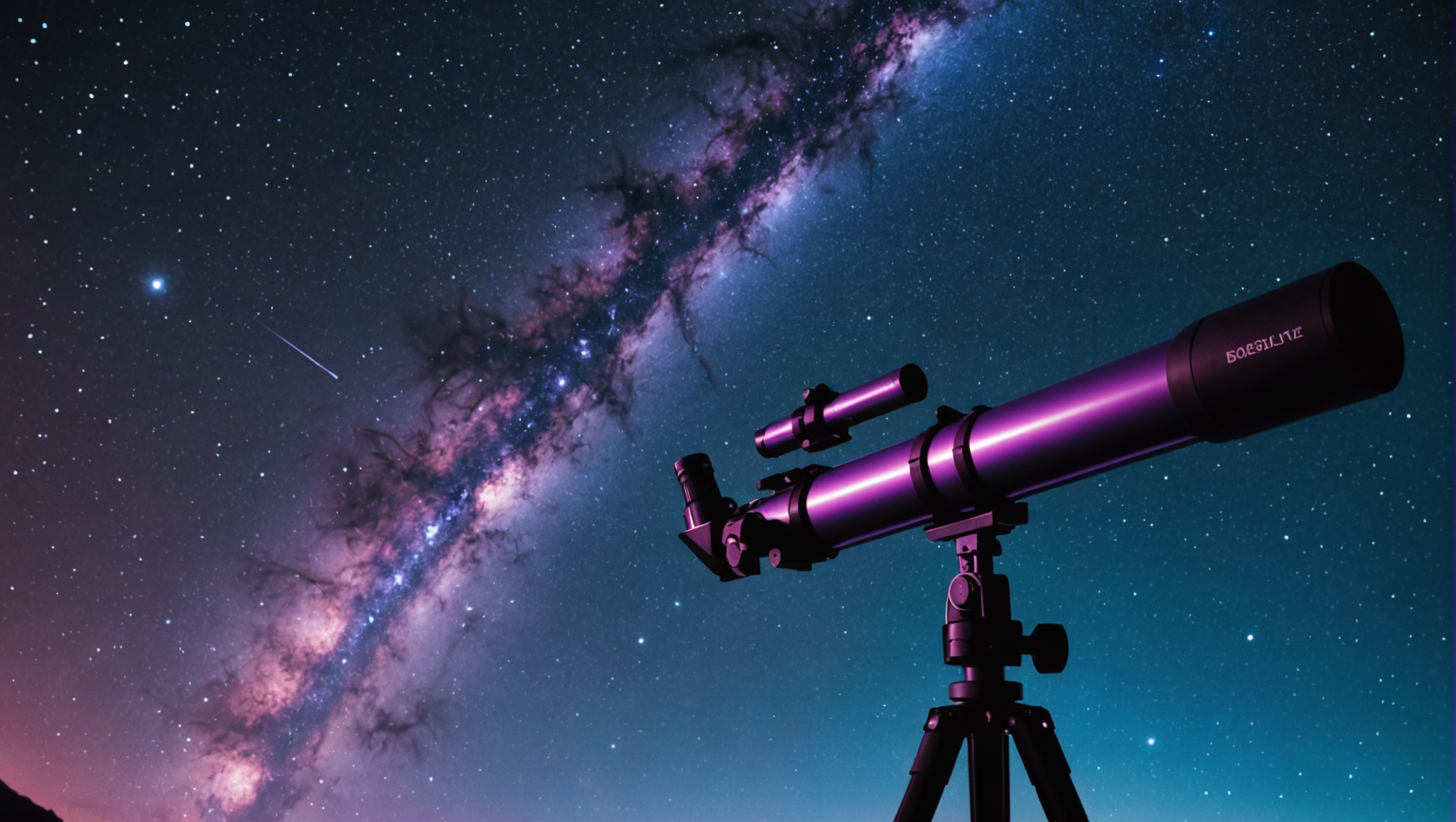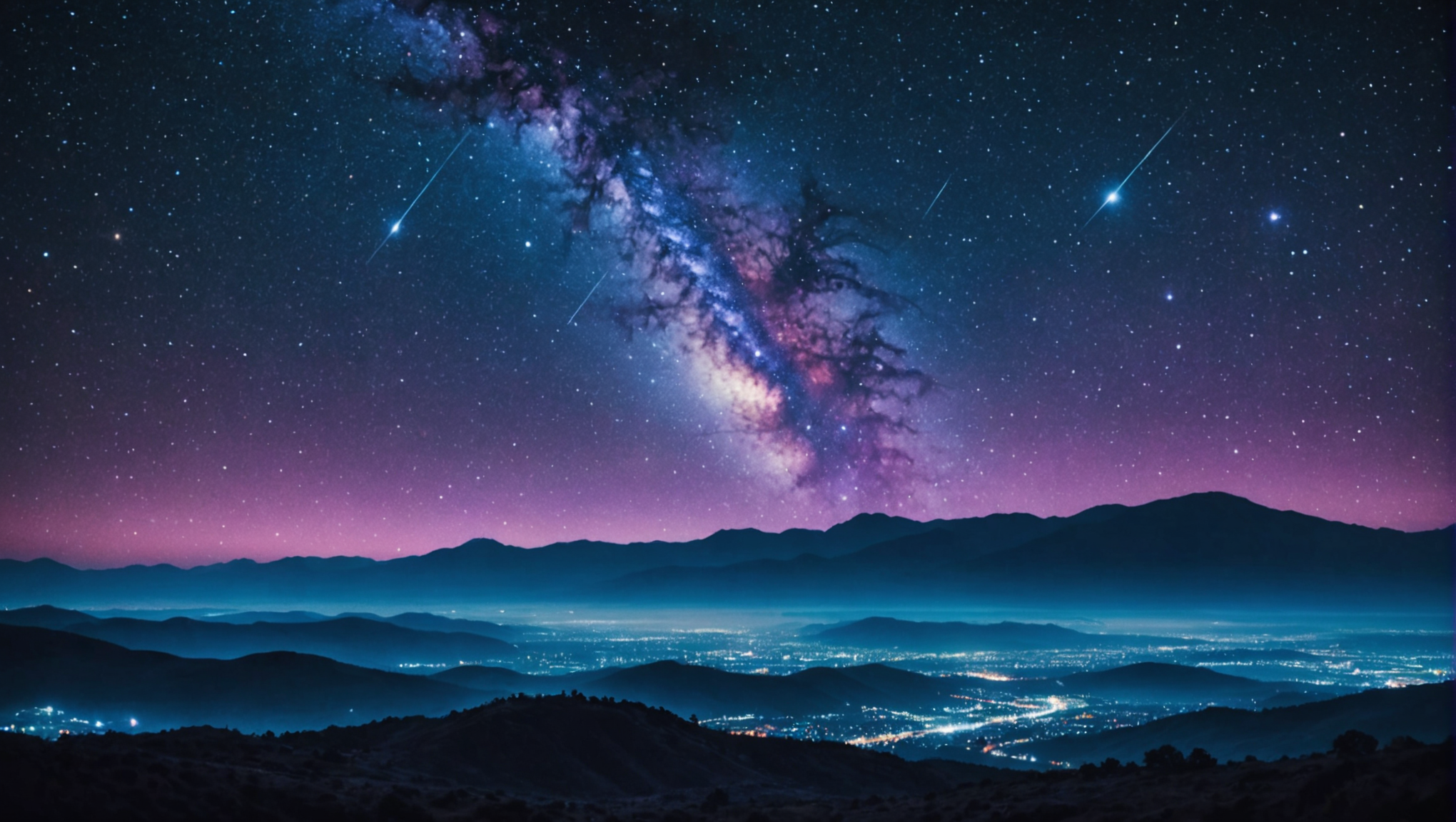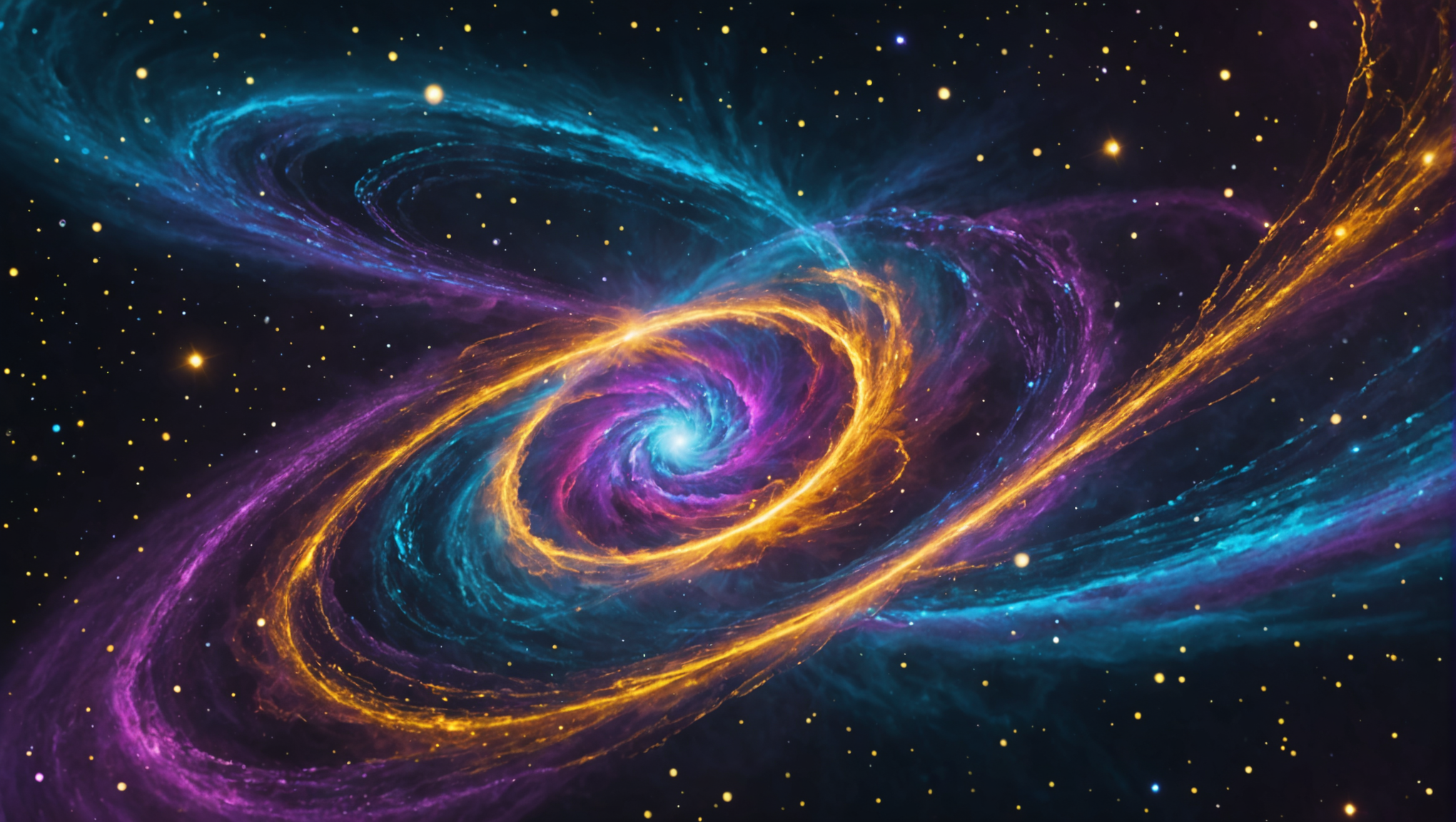Unveiling the Cosmic Frontier

Understanding the Limits of Our Universe
In the vast expanse of the cosmos, one cannot escape the feeling that we are merely scratching the surface of understanding the universe. At the heart of this exploration lies a fundamental question: what are the limits of our observable universe? We are confined to a realm defined by cosmic boundaries, where light from distant galaxies takes billions of years to reach us and the mysteries beyond these limits beckon with whispers of knowledge yet to be unveiled.
To comprehend these limits, we first must acknowledge that our universe is defined not only by the stars and galaxies we see but also by the mathematical frameworks we devise to describe them. As we survey the night sky, we are reminded that the observable universe, approximately 93 billion light-years in diameter, is shaped by the finite speed of light and the time since the Big Bang. This threshold sets a tangible boundary on what we can observe and study. However, here lies a paradox: while we strive to expand our knowledge through advanced telescopes capable of peering deeper into space, we recognize that the observable universe is merely a fraction of what might actually exist.
The limitations of our perception are further underscored by the concept of the cosmic horizon. Beyond this horizon lies an infinite realm, potentially filled with countless galaxies and phenomena that remain forever out of reach. The concept of cosmic inflation offers insights into this; during the rapid expansion following the Big Bang, different regions of space stretched at varying rates, leading to an inconceivably vast fabric of universe beyond our comprehension. It’s within this theoretical framework that the limits of our observable universe extend into the realm of speculation, hinting at a multiverse where our universe is just one of many.
As we continue to uncover the nature of spacetime, we come to realize that our understanding of the cosmos is constrained by the instruments we employ. The telescopes and detectors we rely upon each have unique sensitivities and limitations. For instance, ground-based observatories confront the challenge of atmospheric interference, while space-based telescopes like Hubble and the James Webb are confined by their operational lifetimes and technological capabilities. This boundary suggests that the vast majority of the universe, possibly teeming with phenomena that defy our current theories, may remain hidden and unexplored, simply because our methodologies cannot reach them.
Adding to this complexity is the notion that as we peer deeper, we encounter the enigma of dark matter and dark energy—two constituents that dominate the cosmos yet evade direct detection. Dark matter, which constitutes about 27% of the universe, influences the behavior of galaxies without being directly visible. Similarly, dark energy accounts for approximately 70% of the cosmic energy budget and drives the accelerating expansion of space. Both phenomena challenge our conventional understanding, suggesting that the universe functions according to rules and forces that we are just beginning to grasp. Their elusive nature implies that our current cosmic boundaries are merely placeholders in an ever-expanding quest for deeper understanding.
Moreover, the limits we impose on our inquiries can sometimes arise from philosophical challenges intertwined with our scientific pursuits. As we grapple with questions of existence, reality, and the fundamental nature of the universe, we are confronted with the limitations of human understanding. The truths we uncover through mathematics and experimentation are contingent upon existing frameworks, many of which may limit our interpretations or understanding of what lies beyond our established paradigms.
Yet, in acknowledging these limits, we are also compelled to explore avenues that lead beyond them. This exploration requires an openness to fundamental shifts in our understanding. The progression of theories in quantum mechanics leads us to ponder questions about the nature of time, reality, and information. The introduction of concepts such as the holographic principle challenges our perceptions of depth and dimension, suggesting that our view of the universe might only scratch the surface of a much richer and more complex reality.
In the spirit of inquiry, we cannot overlook the tantalizing prospect that the universe may harbor realms we have yet to explore. Perhaps hidden dimensions lie beyond our familiar three-dimensional space, or there are cosmic phenomena yet to be uncovered by even the most sophisticated instruments. Each discovery propels us further along this fascinating path, unveiling the intricacies of matter and energy and challenging us to reconsider our very conception of existence.
Ultimately, the limitations of our understanding serve as a catalyst, igniting a desire for deeper exploration and greater challenges. The beauty of science lies not only in the answers it unravels but also in the questions it provokes, each one redrawing the boundaries of our quest. As we advance, let us remain curious, embracing the vast tapestry of possibilities that lie beyond the limits of our observable universe, inspiring future generations to venture boldly into the great unknown.

The Concept of the Multiverse
The idea of the Multiverse is a thrilling extension of our understanding of reality, where our universe is merely one among potentially an infinite number of universes. This idea not only expands our notion of what it means to exist within a universe but also reshapes fundamental questions about the nature of everything: from the cosmos itself to the laws of physics that govern our daily lives.
At the heart of this dialogue lies the notion that the universe we observe is but a single thread in a vast tapestry woven with many different realities. The Multiverse hypothesis springs from various sources, including advances in quantum mechanics, string theory, and cosmological models such as cosmic inflation. Each of these theories contributes unique insights, deepening our exploration of existence and challenging conventional thought.
Cosmic inflation—an explosive growth of space shortly after the Big Bang—provides a fertile ground for the Multiverse concept. During this period, different regions of the universe may have inflated at varying rates, leading to pockets of space that can evolve independently. These separate regions or “bubble universes” could harbor different physical constants, laws, and histories—some with conditions ripe for life, while others might be radically inhospitable. The implications are profound; if such bubble universes exist, our understanding of existence itself is transformed, compelling us to rethink our place in a grand scheme far beyond our immediate experience.
Further intrigue blooms from quantum mechanics, particularly through interpretations suggesting that the act of measurement leads to branching realities. The many-worlds interpretation posits that every quantum event spawns a divergent universe, resulting in a near-infinite number of parallel existences. When you make a choice or a particle adopts a state, countless versions of you exist, each corresponding to every possible outcome. This notion provokes a profound philosophical debate on the nature of identity, free will, and the interconnectedness of all that exists.
String theory adds yet another dimension to this expanding dialogue. It posits that the true constituents of matter are not particles but vibrating strings in an intricate landscape that may encompass ten or more dimensions. These dimensions could potentially harbor entire universes—each governed by different physical laws—which could also offer explanations for some of the deepest questions concerning gravity, electromagnetism, and quantum forces. If this model holds, it reframes our considerable understanding of the cosmos, suggesting our universe is just one of many configurations shaped by the oscillations of strings in these hidden dimensions.
Yet with all this speculation arises a daunting challenge: how do we test theories about something that may be fundamentally inaccessible? The very essence of the Multiverse poses questions that science traditionally relies on—observation and experimentation. As we consider the implications of these theories, the conversation extends beyond mere astrophysics into the realms of philosophy, ethics, and the limits of scientific inquiry. If multiple universes exist, our claims of knowledge become complex entanglements of interpretations layered with probabilities and possibilities.
Moreover, the Multiverse concept beckons questions about its implications on our understanding of existence, reality, and life itself. If life emerges in various forms across different universes, it challenges our perspective on what it means to be alive. What if the physical laws we know are unique to our universe? How would this affect our understanding of consciousness and the evolution of intelligence? Philosophers, scientists, and dreamers alike are drawn into an infinite rabbit hole of existential ponderings, unveiling nature’s complexity in astonishing ways.
While the Multiverse remains a largely theoretical construct, its implications are profound. They initiate discussions about the boundaries of our understanding, challenging us to consider broader frameworks surrounding existence and the nature of reality. As we advance our scientific exploration, the concept invites a spirit of curiosity that breathes life into the quest for knowledge—urging us to continually seek deeper truths and veer off the well-trodden paths of established paradigms into the uncharted territories of the cosmos.
Ultimately, contemplating the Multiverse evokes a sense of wonder—a reminder that while we make strides in understanding our universe, the grandeur of existence may encompass realities beyond our wildest imaginations, urging us to keep pushing our celestial boundaries and embrace the extraordinary fabric of cosmic possibility.

Exploring Hidden Dimensions and Cosmic Phenomena
The exploration of hidden dimensions and cosmic phenomena presents an exhilarating frontier in the quest for a deeper understanding of our universe. With roots in string theory and quantum mechanics, the notion of dimensions beyond our conventional four (three dimensions of space and one of time) challenges our very understanding of reality. Predominantly considered as theoretical constructs, these additional dimensions have profound implications for how we perceive existence and the nature of the cosmos itself.
String theory, for instance, posits that the fundamental particles we observe are not point-like entities but rather tiny, vibrating strings whose different vibrational patterns correspond to different particles. This theory thrives on the existence of multiple extra dimensions that we cannot easily perceive. These hidden dimensions may be compactified, curled up so tightly that they escape detection at ordinary scales. Yet, their specific geometries and behaviors could dictate the very physical laws that govern our universe. Imagine a universe with not just the familiar manifestations of gravity and electromagnetism but also an array of unknown forces emerging from these dimensions. The potential implications could reshape our understanding of physics, biology, and the very fabric of existence.
Moreover, as we delve into the possibilities offered by hidden dimensions, we are presented with intriguing phenomena such as wormholes—hypothetical shortcuts through space and time that could connect disparate points in the universe. If such structures exist, they could allow for instantaneous travel between locations light-years apart, thus redefining notions of distance and exploration. The idea of traversable wormholes suggests that education about the universe could take a quantum leap, transforming the logistics of space travel and opening avenues for new discoveries amidst the stars.
Yet, understanding these constructs is not limited to theoretical physics. Observational astronomy is witnessing advancements that may help us search for evidence of these astonishing phenomena. Gravitational waves—ripples in the fabric of spacetime created by massive cosmic events—can reveal further complexities in our understanding of the universe. The recent detections of gravitational waves from colliding black holes or neutron stars allow us to probe the conditions of spacetime in extreme environments. Each observation drives researchers to question the fundamental aspects of reality, blurring the lines between the observable and the unseen.
In the sphere of cosmology, cosmic microwave background radiation (CMB) also presents insights into hidden dimensions and cosmic phenomena. As the afterglow of the Big Bang, the CMB holds imprints of the universe’s earliest moments. Anomalies within this ancient radiation hint at possibilities beyond our immediate comprehension. Certain fluctuations and patterns observed may arise from factors not yet understood, such as interactions with hidden dimensions or processes we have yet to define. The unfolding story of the CMB is not just about understanding our universe’s origin but also about contemplating what lies beyond our visible horizon.
As we advance in technology and theoretical frameworks, the quest to uncover dimensions and cosmic phenomena will only intensify. Scientists are developing instruments with increased sensitivity, enabling us to detect faint signals from the universe that may indicate the presence of hidden dimensions or exotic matter. These technologies could also illuminate pathways through which we might explore the cosmic fabric, as we decipher the mysteries embedded within the cosmos.
Despite these advancements, the appeal of hidden dimensions urges us to stay philosophically vigilant. Each scientific breakthrough compels reflection on how our understanding should evolve when faced with new realities. The intersection of the known and unknown remains fraught with questions that delve into existence itself. Should we discover dimensions entwined with our own, or phenomena that defy our current physical laws, the implications for humanity and our understanding of life will resonate deeply across disciplines.
In this breathtaking journey of exploration, the fabric of reality beckons with mysteries waiting to be unraveled. Each question we pose about the universe enriches our knowledge, compelling us to traverse the boundaries between science, philosophy, and imagination. As we venture forth into the realms of hidden dimensions and cosmic phenomena, we are reminded that the universe is not merely a vast expanse devoid of meaning, but a dynamic entity rich with stories yearning to be told.
The Future of Cosmic Discovery and Exploration
The landscape of cosmic discovery and exploration is rapidly evolving, driven by unprecedented advancements in technology, methodology, and our understanding of fundamental physics. As we stand on the brink of a new era, we are encouraged to imagine the vast potential that lies ahead, challenging our previous assumptions about the universe and our place within it. The next few decades promise to yield profound revelations as we delve deeper into the mysteries of the cosmos.
Central to this unfolding narrative is the development of next-generation telescopes and observational instruments. The James Webb Space Telescope (JWST), with its incredible infrared capabilities, is leading the charge. Launched in December 2021, JWST enhances our ability to expose distant galaxies, stellar nurseries, and the atmospheres of exoplanets. This contemporary observatory allows us to probe the universe’s history and evolution in unprecedented detail, revealing celestial phenomena that were previously obscured by cosmic dust. With each new image and data set, JWST brings us a step closer to answering pressing questions about the origins of galaxies and the conditions necessary for life.
Moreover, the upcoming European Space Agency’s Jupiter Icy Moons Explorer (JUICE) and NASA’s Artemis program signify exciting commitments to explore our solar system. JUICE, set to launch in 2023, aims to scrutinize the potential habitability of Jupiter’s icy moons—Ganymede, Europa, and Callisto—each of which could harbor subsurface oceans. Insights from this mission will deepen our knowledge of planetary formation and the conditions necessary for sustaining life. At the same time, the return of humans to the Moon through the Artemis program seeks to establish a sustainable presence, providing a foundation for future explorations to Mars and beyond.
As we explore deeper into the cosmos, the implications of our discoveries prompt profound reflections on time, space, and existence. The recent detection of gravitational waves, ripples in spacetime produced by colossal cosmic events such as mergers of black holes or neutron stars, challenges our understanding of fundamental physics. With each event captured, physicists have the opportunity to study extreme conditions that were previously theoretical, driving inquiries that may ultimately link quantum mechanics to gravity. As telescopes become increasingly sophisticated, pairing their observations with data on gravitational waves may allow us to address questions about dark matter, dark energy, and whether the fabric of the cosmos is woven from more dimensions than we presently recognize.
In parallel, the burgeoning field of astrobiology is set to flourish, particularly as we delve into the study of exoplanets and their atmospheres. The quest to detect biosignatures—indicators of life—in the atmospheres of these distant worlds ignites curiosity about the diversity of life that may exist beyond Earth. The advancements in spectroscopy and new telescopic technologies enable scientists to analyze the thermal and chemical features of these planets, leading us closer to the tantalizing possibility of discovering extraterrestrial life forms. Each exoplanet discovered is not only a potential new home for life but also an opportunity to broaden our understanding of habitability, evolution, and the intricacies of life in various environments.
As we anticipate future endeavors, it’s essential to remain cognizant of the ethical implications of our explorations. The potential for contamination on other celestial bodies poses serious considerations; ensuring that we do not disrupt any existing ecosystems is paramount to maintaining the integrity of these environments. Moreover, should we encounter extraterrestrial intelligence, the philosophical and ethical discourse becomes even more critical. Responsible exploration and stewardship must accompany our scientific pursuits, as we aim to ensure that our journey into the cosmos is one of discovery and respect.
At the same time, advancements in quantum technologies and artificial intelligence are positioned to revolutionize data collection and analysis in astronomy. Integrating machine learning algorithms allows for rapid identification and classification of cosmic phenomena, massively increasing our efficiency in processing data from various observatories. As we continue to break down the barriers of knowledge, these technological integrations ensure that we can keep pace with the sheer volume of information available about the universe.
The future of cosmic discovery is not merely a question of surviving the vastness of space; it invites us to imagine an intricate tapestry of interconnected threads spanning across dimensions and branches of existence. Each mission, each discovery, serves as a building block toward understanding the grand design of the cosmos, compelling us to redefine not just the boundaries of our knowledge but the very essence of life and reality itself. As we embrace the mysteries lying ahead, let us step boldly into the depths of the universe, driven by curiosity, equipped with innovation, and bound by the shared human spirit that seeks to explore the unknown.